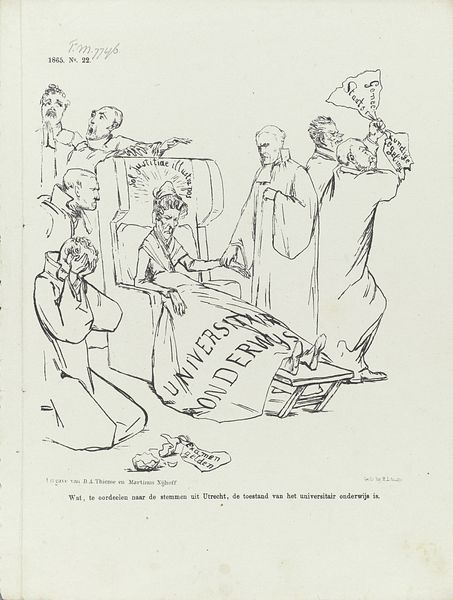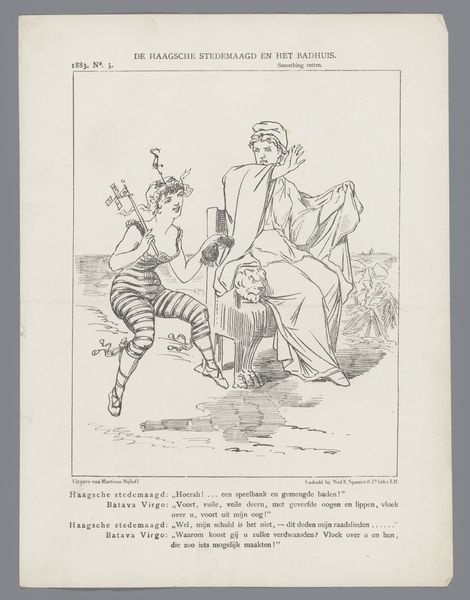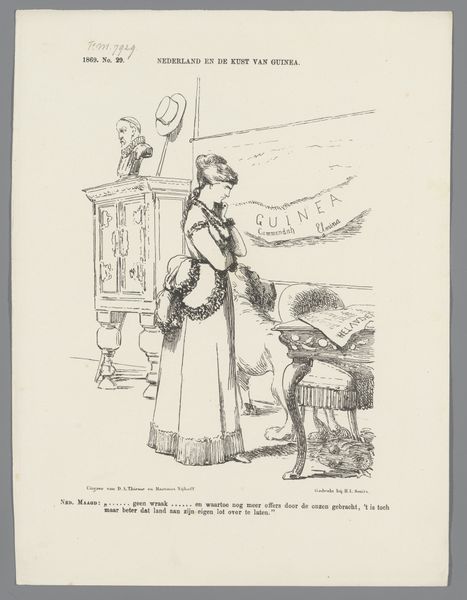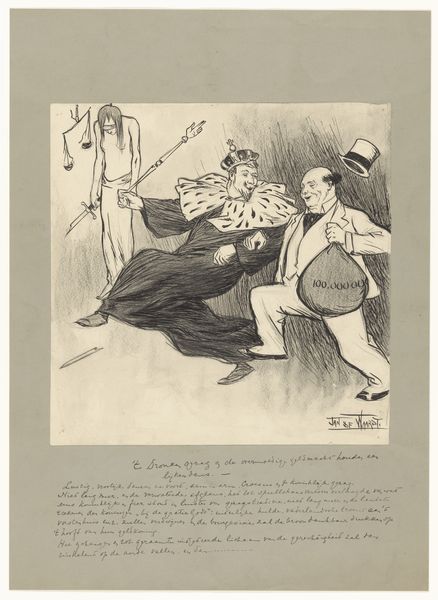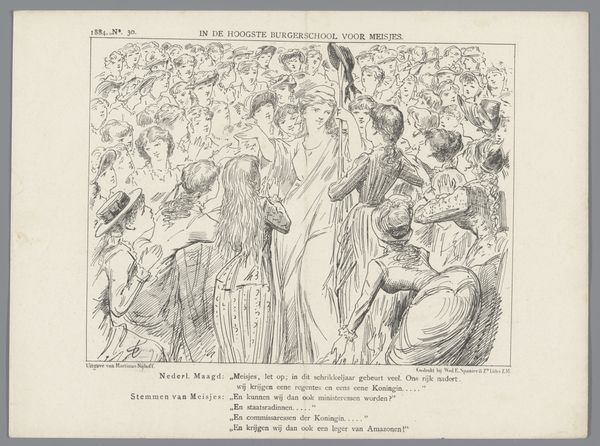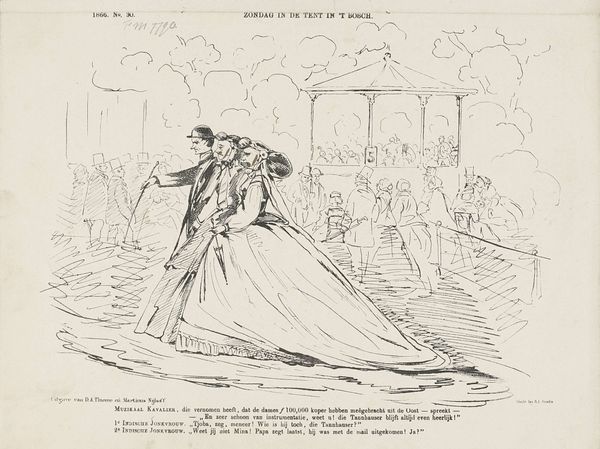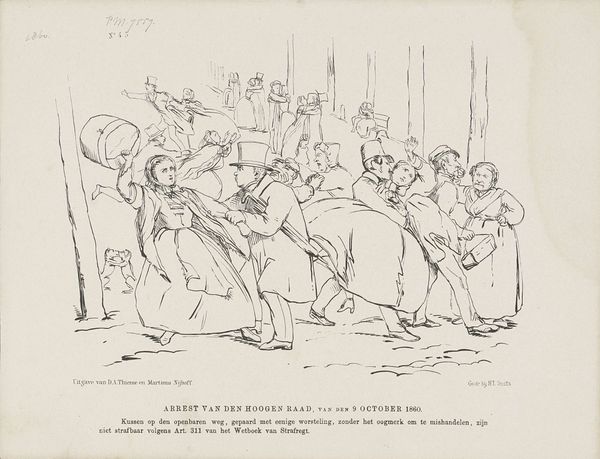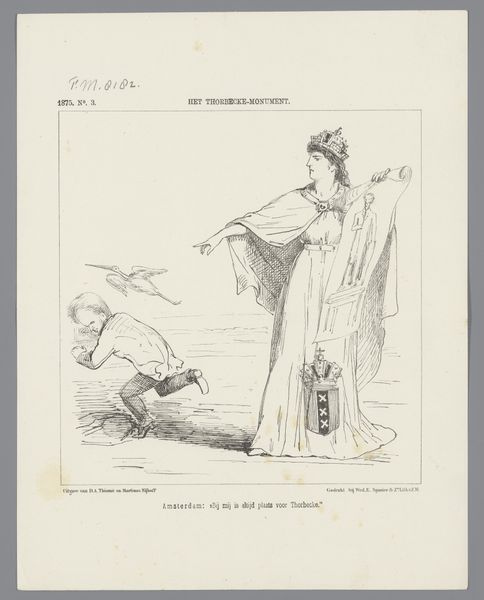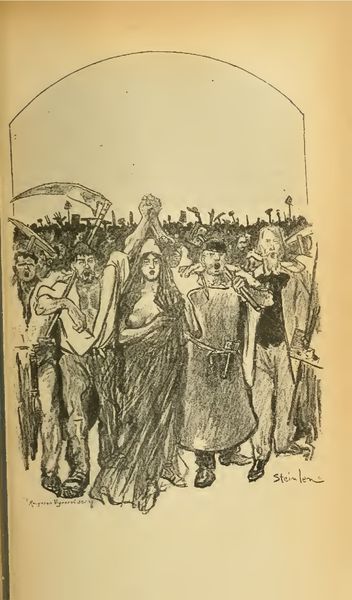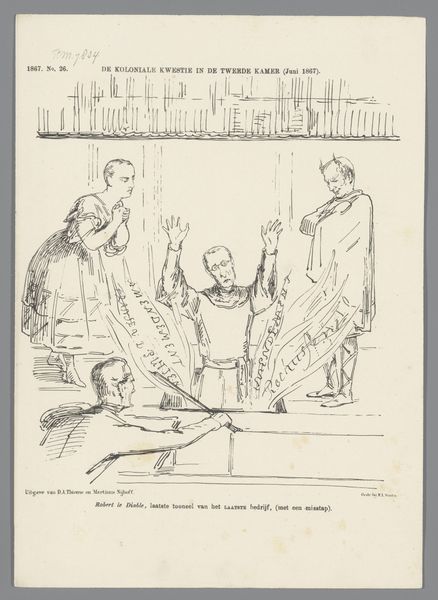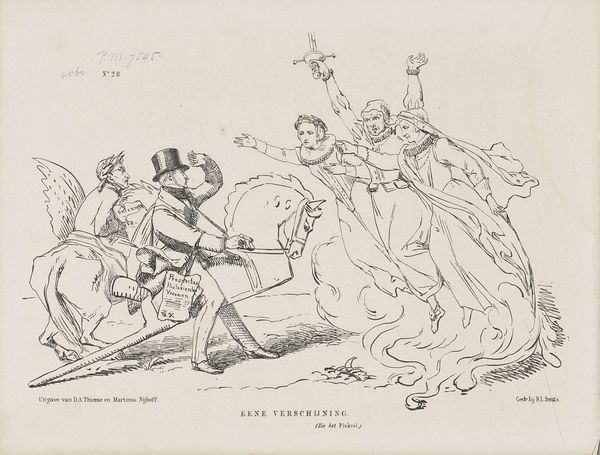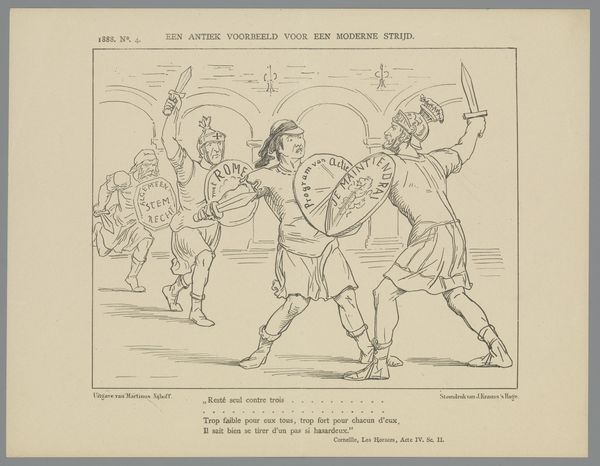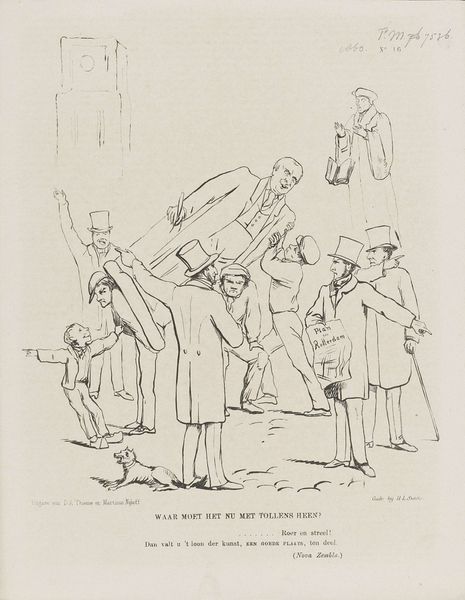
Dimensions: height 275 mm, width 215 mm
Copyright: Rijks Museum: Open Domain
Curator: Here we have a caricature from 1865, created by Johan Michaël Schmidt Crans. It's rendered in ink on paper and titled “Spotprent op oppositie tegen het Noordzeekanaal, 1865,” which translates to "Cartoon on the opposition to the North Sea Canal, 1865." Editor: My first impression is one of charged agitation. The central female figure, seemingly a personification of the Netherlands, dominates the composition. Her gesture is strong, directional… almost accusatory. Curator: Absolutely. The artist employs Romantic aesthetics to portray this pivotal moment of social tension, using allegory to represent a struggle over progress. What interpretations arise for you regarding her clothing? Editor: It’s a deliberately ambiguous mix. She wears classical drapery suggesting virtue and antiquity, yet she’s holding working man's tools -- a shovel and pickaxe. This perhaps embodies the complicated role of the common person forced to realize difficult projects? It also evokes a fierce protective stance. She almost seems to shield those hesitant figures behind her. Curator: The figures behind are rendered in shadow; they wear the garb of the time but clearly struggle with accepting her authority in relation to her goal to lead them onward to dig and open the Spa, as is written beneath the work. What does that suggest about how contemporary audiences might perceive her? Editor: This imagery serves to address how modernization can be advanced even in a field of resistance, to make this land and these men move onward into modernity even if it requires the feminine form as a spearhead and as physical force. Note the subtle class critique with those fearful elite men juxtaposed against the masses ready to break ground. There are entire masses there! Curator: Interesting point, also relevant is the inscription itself—words of defiance aimed at the ‘plasuwhartigen,’ or faint-hearted. The overall impression leans into this idealized image of strength leading society forward toward its destined place on the cutting edge. This moment marks the canal's influence on national pride and ambition. Editor: And this particular visual vocabulary becomes very relevant for feminist rhetoric about agency, labor, and nation building itself! Thank you. Curator: It brings into relief that even now we inherit and reshape many of these struggles through social engagement.
Comments
No comments
Be the first to comment and join the conversation on the ultimate creative platform.
